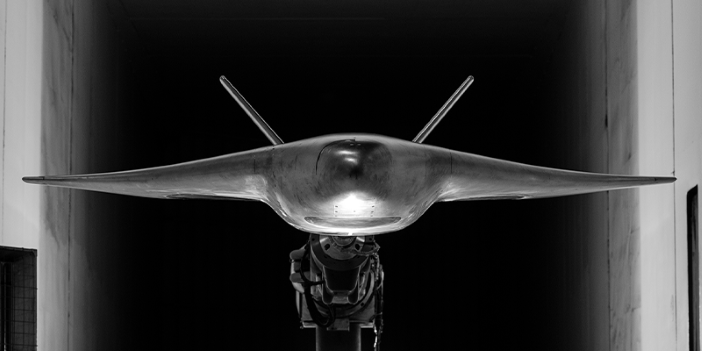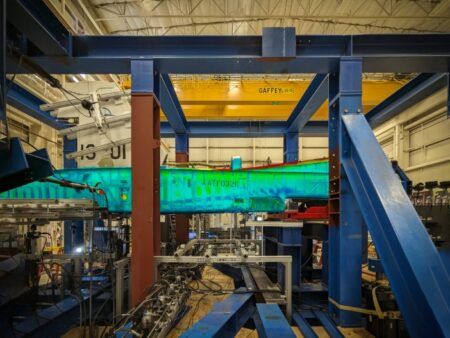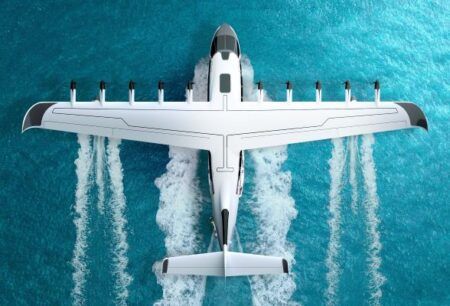The high-speed vertical take-off X-plane Aurora is developing for the US military has passed a key set of wind tunnel tests.
Boeing R&D company Aurora Flight Sciences has completed stability and control wind tunnel testing for the high-speed vertical take-off and landing (HSVTOL) concept. The X-plane is in the preliminary design phase doe the Defense Advanced Research Projects Agency (DARPA) Speed and Runway Independent Technologies (SPRINT) program.
The SPRINT program aims to design, build, and fly an X-plane to demonstrate key technologies that enable a transformational combination of aircraft speed and runway independence.
Aurora’s concept uses embedded lift fan technology and a blended wing body design to provide the scalable capability to cruise at 520mph (840km/h) and take off and land vertically on unprepared surfaces.
The wind tunnel test, completed in March at Boeing’s V/STOL wind tunnel near Philadelphia, used a 20% scale model to collect data that will improve understanding of the vehicle’s low-speed handling, particularly during critical transition from vertical to forward flight. The data will be used to validate computer models, feed the program’s flight simulator database, and add to the team’s knowledge base for full-scale vehicle design.
“This SPRINT wind tunnel test has validated our analytical estimates of the performance of the aircraft. With this successful risk reduction testing completed, the program is ready to proceed into detailed design,” said Larry Wirsing, vice president of aircraft development at Aurora Flight Sciences. “Aurora and Boeing have assembled a world class team of experts in advanced vertical lift technologies, and we are looking forward to the opportunity to continue working with the [US] Government team to finish the design, build, and flight test of this aircraft that will demonstrate game-changing capabilities in speed, agility, and cargo capacity.”
The recent wind tunnel test was the second major test event scheduled for the X-plane’s preliminary design phase. It follows last year’s ground effect test which showed that suck down effects created by the lift fans in hover were negligible and that the landing gear is set to the appropriate height to minimize adverse pitching moments from forming during ground operations.





